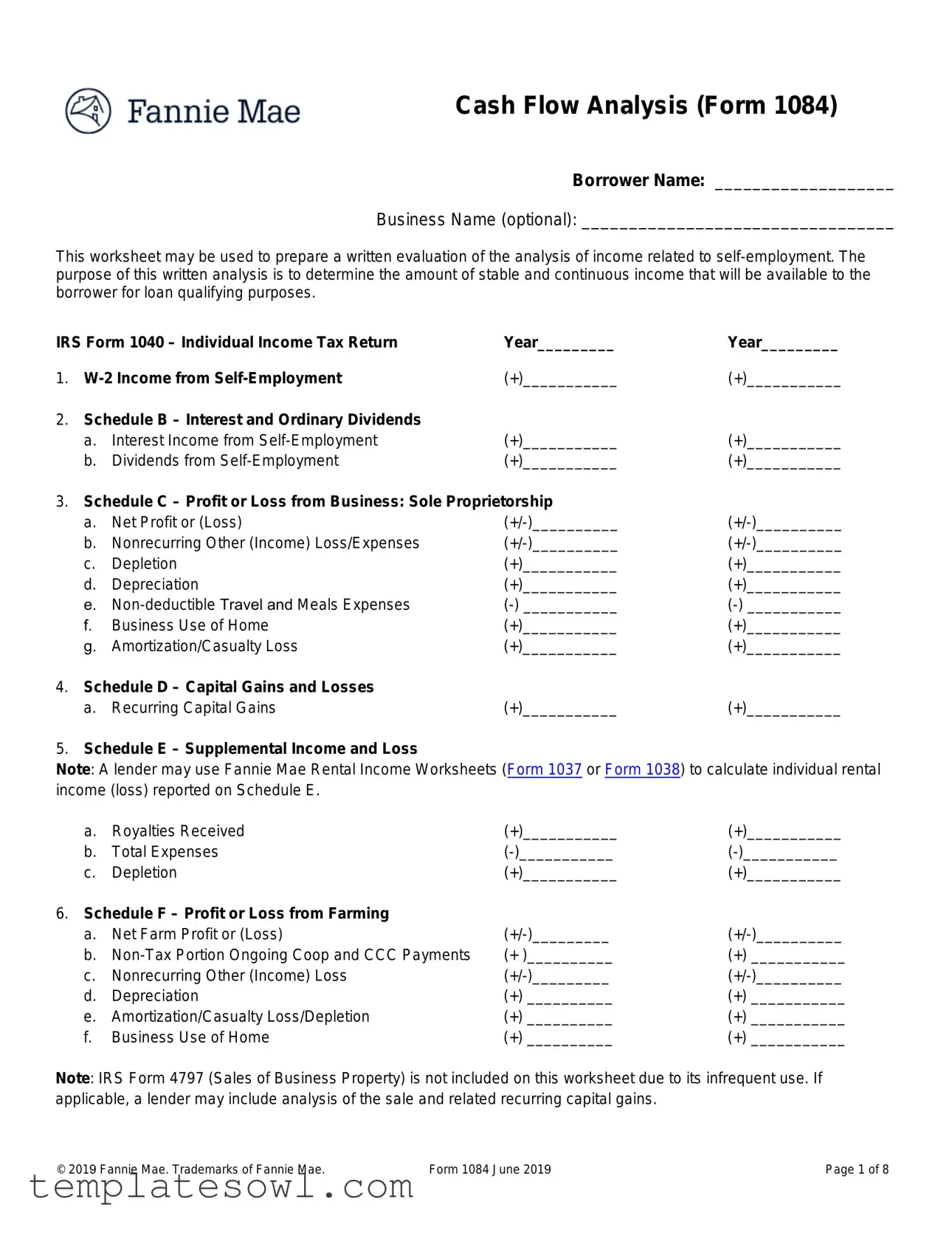What is the purpose of the Fannie Mae Income Worksheet form?
The Fannie Mae Income Worksheet, Form 1084, is primarily used to assess and document the income of a self-employed borrower. This worksheet provides a detailed cash flow analysis to help lenders determine the stable and continuous income available for loan qualification. It gathers important financial details from various tax forms and schedules.
How should I fill out the cash flow analysis section?
In the cash flow analysis section, you need to include various sources of income from your tax returns. This includes wages, interest, dividends, and profits from your business shown on Schedule C. Make sure to accurately report both income and expenses, as they all contribute to understanding your financial situation comprehensively.
What should I include from my IRS tax returns?
You should gather information from several IRS tax forms, including Form 1040, Schedule B for interest and dividends, Schedule C for sole proprietorship profits or losses, Schedule D for capital gains, and others based on your situation. Each section requires specific income details that reflect your earnings from self-employment and any business activities.
What is the significance of Schedule K-1?
Schedule K-1 is crucial when you're involved with a partnership or S corporation. It documents your share of the earnings, which can only be considered for loan qualification if there's proof that the income was actually distributed to you or if the business has enough liquidity to support this withdrawal. Proper documentation ensures you receive consideration for these earnings in your loan application.
How do I handle non-recurring income or losses?
When you encounter non-recurring income or losses, assess whether they will continue. If the income is stable and likely to recur, no adjustment is needed. However, if it is a one-time event, you should generally deduct that income or add back losses only if they won't occur again. It’s vital to evaluate these items carefully to reflect your true financial position.
How can I verify my W-2 income from self-employment?
To verify W-2 income from self-employment, you should match the Employer Identification Number (EIN) on your W-2 with the EIN associated with your business. Additionally, when submitting your business tax returns, cross-reference any reported compensation of officers with your W-2 to ensure consistency in reported income.
What expenses can be added back when calculating cash flow?
Certain expenses, like depreciation, depletion, and some non-deductible travel and meals expenses, can be added back to your income. These deductions lower taxable income but do not necessarily represent cash flow out of your pocket. Ensure you are aware of which expenses qualify to achieve an accurate representation of your cash flow situation.
Is rental income analyzed differently?
Yes, rental income is evaluated separately. Use the Fannie Mae Rental Income Worksheets (Forms 1037 or 1038) specifically designed for this purpose. These forms help calculate individual rental income or losses reported on Schedule E. Be sure to gather all necessary documentation to support your rental income claims when applying for a loan.
What if I have both S corporation and partnership income?
If you have income from both an S corporation and a partnership, you need to fill out the related sections for each in the worksheet

